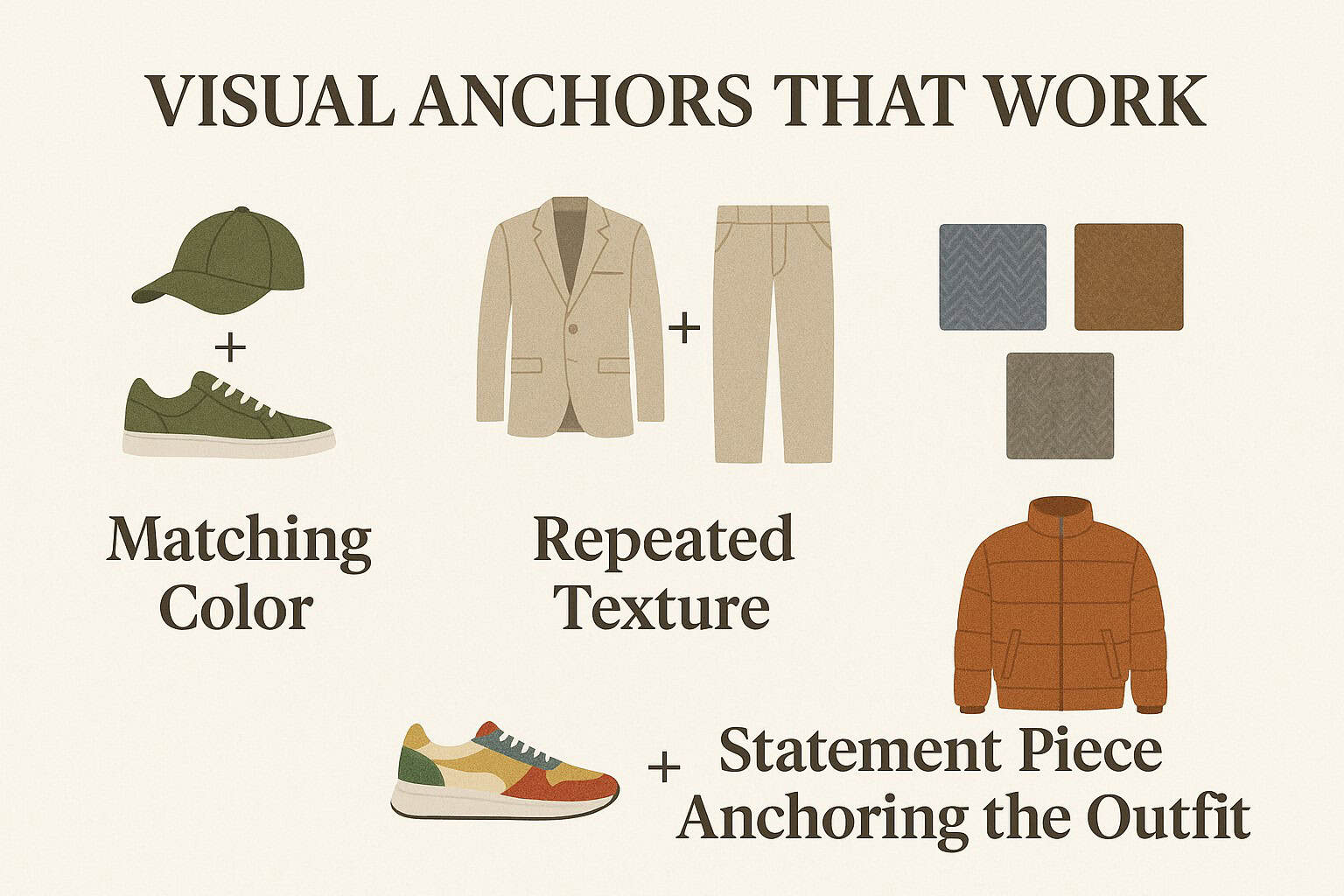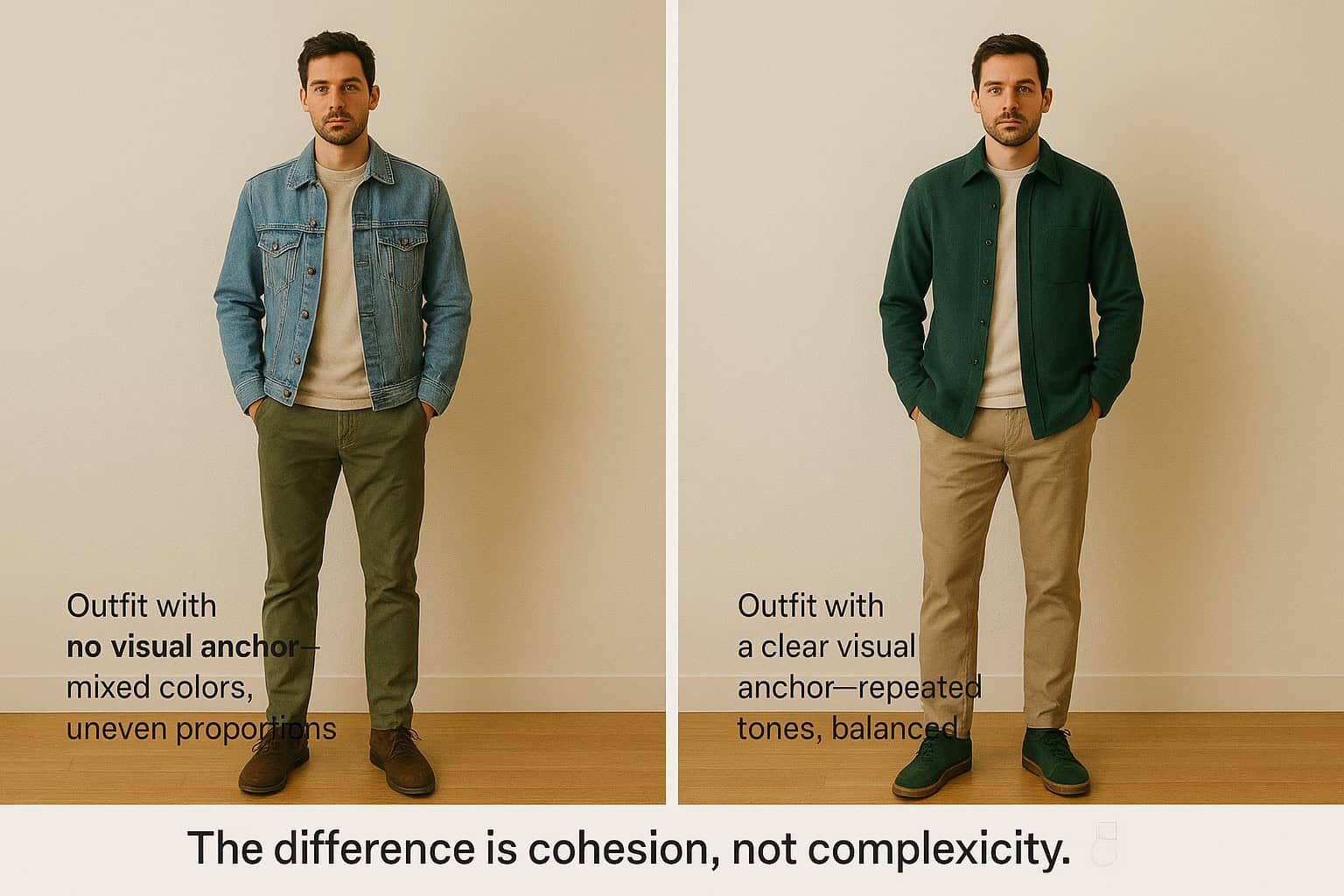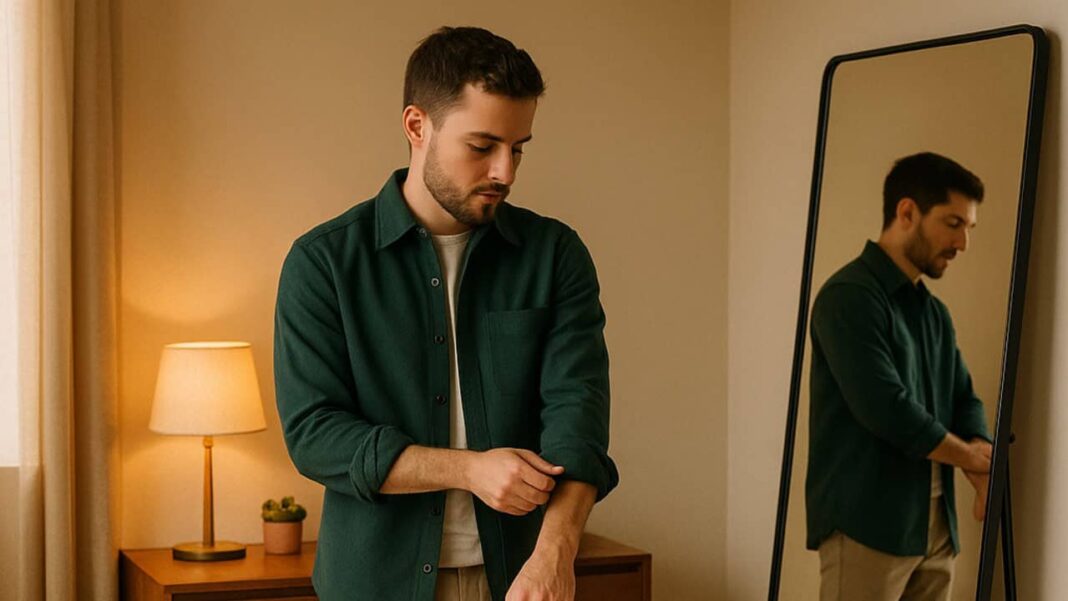We independently evaluate all recommended products and services. Any products or services put forward appear in no particular order. if you click on links we provide, we may receive compensation.
Sometimes it’s hard to explain why an outfit looks “off.” Every piece might fit. The colors might technically match. But something still feels slightly disconnected—like your clothes were picked in a rush, not worn with purpose.
Here’s the truth: it’s rarely about adding more. It’s about cohesion—and there’s one trick that consistently brings that to your outfit.
Use a visual anchor.
Whether it’s a color that gets repeated, a texture that ties top and bottom together, or a single standout piece that everything else supports, this move is what separates a decent outfit from a dialed-in one.

Use a Visual Anchor
The simplest way to make your outfit feel styled—not thrown on—is to connect the dots. That usually starts with one visual element that grounds the look.
Color is the most obvious move. Try matching your shoes to something up top—a navy sneaker with a navy overshirt, or olive pants with a beanie in the same tone. Even if everything else is neutral, that repetition reads as intentional.
Texture also works. A denim jacket with dark jeans isn’t a Canadian tuxedo—it’s cohesion, as long as the shades are slightly different. A chunky knit and suede boots can echo each other in warmth and softness. When the top and bottom share a tactile quality, the outfit feels unified—even when the pieces are basic.
Contrast can also be the anchor. One bold item—a bright jacket, colorful sneakers, or patterned overshirt—can center an otherwise quiet outfit. The key is to let the statement breathe. Everything else should support it, not compete.
Plan Around One Hero Item
Every strong outfit has a focal point, even if it’s subtle. Instead of thinking top-to-bottom or front-to-back, start with the one piece you’re excited to wear, and build from there.
If it’s a standout pair of sneakers, keep the pants cropped and the rest of the look understated. If it’s a vintage overshirt or leather jacket, let that shape the fit, tone, and attitude of everything underneath. Even something as small as a watch or bag can be the anchor—especially if it introduces color, metal, or leather that’s echoed elsewhere.
This doesn’t mean every outfit needs a hero item. But choosing one thing to build around makes the rest of the look fall into place faster—and more coherently.
Do the Mirror Test
Before heading out, give your outfit a 5-second scan in the mirror. Don’t analyze—just notice.
Does the look feel balanced top to bottom? Do the colors feel connected? Is there too much going on in one area, or too little in another?
If something feels forced, remove it. A hat that doesn’t tie in with anything. A necklace that competes with the shirt. Simplifying is often what makes the outfit stronger. It’s not about stripping away personality—it’s about letting a few things speak clearly, instead of everything speaking at once.

Final Thought
Looking intentional doesn’t require more clothes or designer pieces. It requires coordination—a simple sense of balance that makes the outfit feel composed.
When in doubt, anchor the look. Repeat a color. Highlight a texture. Choose one piece to lead—and let everything else follow. That’s the trick. And once you start doing it, you’ll notice the difference every time.
The editorial team at FashionBeans is your trusted partner in redefining modern men’s style. Established in 2007, FashionBeans has evolved into a leading authority in men’s fashion, with millions of readers seeking practical advice, expert insights, and real-world inspiration for curating their wardrobe and lifestyle.
Our editorial team combines over 50 years of collective experience in fashion journalism, styling, and retail. Each editor brings specialized expertise—from luxury fashion and sustainable style to the latest grooming technology and fragrance science. With backgrounds ranging from GQ and Esquire to personal styling for celebrities, our team ensures every recommendation comes from a place of deep industry knowledge.
